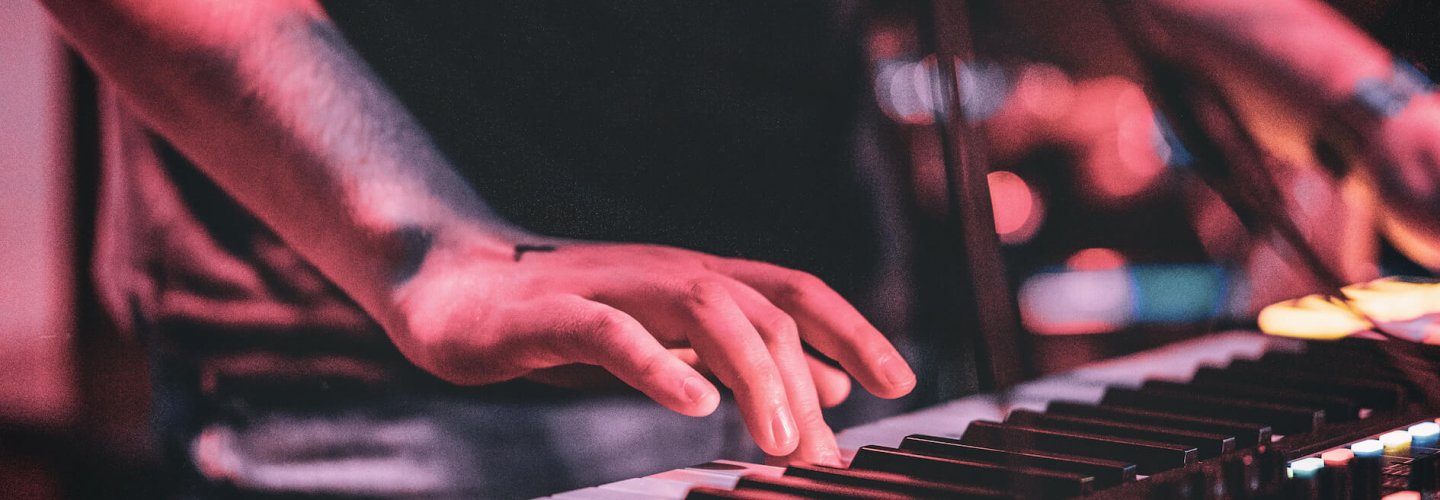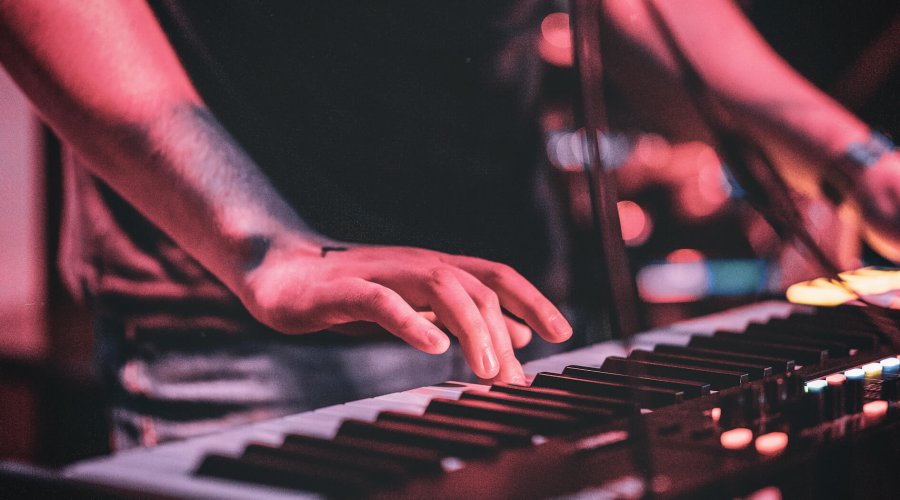We asked Luke Jackson a UK-based composer and producer creating synthwave music under the moniker of Brandon, to share with us a few home music production tips.
As of the time of writing this blog, much of the world has been stuck indoors due to the current Coronavirus pandemic. However, there has arguably been no better time for musicians and artists to let their creative juices flow and dive into the world of writing, recording and producing music from home. My aim here then, is to explore what is required for home music production, while considering aspects such as the technology required, cost, recording environment, and possibilities for collaboration.
Computer Setup
As Moore’s law states, computing power is increasing exponentially year-on-year. This means that computers with a relatively good spec list, capable of being sufficient for most music production setups, are becoming more affordable each year. Many laptops are capable of running most, if not all, DAW programs (Digital Audio Workstations), and desktop computers are no longer a necessity. Of course, depending on the kind of music you wish to produce, certain projects such as those that utilise a wealth of software plugins, or require 100+ audio and MIDI tracks, may put more strain on your system, requiring a higher spec computer to manage performance. However, as a general guide, MusiciansHQ.com list the following as the minimum recommended laptop specs for music production:
• At least 2.2Ghz i7 quad-core processor
• At least 4GB of RAM
• a 64-bit operating system
• At least 256GB of internal storage (HDD or SSD) • At least a 15-inch screen
DAWs
There are many Digital Audio Workstations out there on the market now. They mostly all offer the same set of tools for working with audio and MIDI, while some may perform better in certain areas of production, and others may be much more user-friendly overall. The main programs that come to mind are, Cubase, Pro Tools, Logic Pro X, Ableton Live, Reaper and FL Studio, but to name a few. For those setting up home recording studios on a strict budget, DAWs such as Cockos’ Reaper require no purchase upfront, instead offering the option of a discounted license ($60) that isn’t mandatory but entitles you to free upgrades over time.
Many DAWs come bundled with an array of software instruments, synths, processing plugins and FX, meaning that you can get to work producing almost any kind of music right away, without the need to purchase any additional software. It is worth looking into what instruments and processing plugins are included with each DAW, in order to determine which program most appeals to you and the kind of music you wish to create.
Audio Interfaces & Speakers/Studio Monitors
It is likely that you will want to invest in an audio interface when setting up a home studio. While they will handle the audio output from your computer, specifically the playback from your DAW, many audio interfaces will also feature input connectivity for microphones and instruments (such as guitars, via direct input with a 1/4-inch jack cable). This enables you to record live performances, and means you are no longer restricted to using digital software instruments within your DAW. While some audio interfaces may require mains power, others can be powered via USB – the same USB connection that handles the transmission of your audio signal.
MusicianOnAMission.com has compiled a list of some of the best audio interfaces available in 2020. You can also filter the list by price, connectivity and recording use.
Once you’ve found yourself an interface, you’ll likely want to invest in a pair of studio speakers/monitors. Most studio monitors will connect to your audio interface either via XLR or 1/4-inch Jack cables (one per speaker for the left & right channels). Many studio monitors will also most often be ‘active’ speakers as opposed to ‘passive’. This means that they don’t require an external power amplifier as they have one built-in, and will simply need to be supplied power via a mains plug. Specifications to consider when sourcing a pair of studio monitors include frequency response (measured in kHz), wattage power (listed as W for ‘watts’, correlating to loudness), and of course physical dimensions with regards to what space you have available. The Yamaha HS7s are just one example of popular home studio monitors that offer a good, and relatively even frequency response, while also providing more than enough power and volume for home studio monitoring. Other prominent home studio monitor manufacturers include Focal, PreSonus, Genelec and ADAM Audio, among others.
Microphones
If you’re looking to record vocals or live instrumentation, you’re going to want to invest in at least one microphone. The main two types of microphone you will likely come across when searching for home studio microphones are dynamic microphones and condenser microphones. Condenser microphones require power, whereas dynamic microphones do not. However, in a home studio setup, your best option would be a condenser microphone. Condenser microphones often tend to be much more effective at capturing the detail in performances and offer more overall clarity when compared to dynamic microphones. This makes condenser microphones ideal for recording studio-quality vocals or acoustic guitar performances for example. The Aston Origin is a relatively budget-friendly condenser microphone suitable for a variety of recording uses. In the field of dynamic microphones, the Shure SM57 has proven to be an age-old classic for capturing the sound from an electric guitar amplifier.
Environment
While it is easy to lose yourself in ensuring you have the best tech and setup, another really important factor to consider when setting up a home studio/recording setup is your environment – specifically how it sounds and behaves when you’re producing and recording music. Ideally, you want your setup to be in a pretty dry-sounding environment – one that has little to no natural reverb. A space that is too reverberant could skew your perception of your music and it’s mix aspects. Additionally, if you are recording a vocal or instrumental performance in a naturally reverberant environment, while it may sound pleasing to the ear initially, this may become an unwanted characteristic of the recording during the mixing stage. Thus, recording in a dry, non-reverberant space allows you to add any desired amount of reverb during the mixing stage later via software plugins.
Materials and contraptions such as acoustic absorption panels and diffusers can be purchased specifically for studio use to absorb and deflect sound in an environment, helping to dampen and reduce any natural reverberations. However, for home studio setups where the use of these upgrades isn’t an option, many home furnishings can still help to absorb sound prevent sound reflections, such as fabric and wood based furnishings like curtains, cabinets, wardrobes and bedding etc.
Collaboration
If working together with band members or other artists in person isn’t possible. This doesn’t mean that you have to forgo the possibility of collaboration. DAW creators such as Avid offer services like Cloud Collaboration via Pro Tools which enable users to collaborate together in real-time within the same DAW project. If you don’t wish to go down this route, you can still collaborate in a number of other ways. For instance, sharing files via services like Dropbox or Google Drive can prove useful, especially for sharing documents containing song lyrics, audio stems, or even DAW project files that collaborators can access anytime at their convenience.
If you don’t have the ability to mix or master your music, or simply wish to hire professional engineers to handle these aspects for you, there are many studios and freelance engineers that will allow you to submit your music to them online, without the need to meet in person and be present for sessions. Effectively, this means that you can record and produce your music in your own home, have it mixed and mastered remotely, then have it sent back to you in finalised form, ready for distribution via a service such as Horus Music.
Blog post by Luke Jackson

